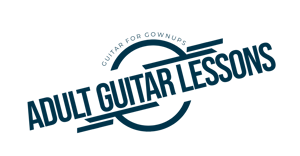I still remember back as a kid on Christmas morning, bouncing down the stairs in anxious anticipation, spying the colorful packages under the tree, and attacking the presents like a crazed wild man, frantically shredding wrapping paper and practically salivating to discover the contents.
Later, when Christmas rolled around and I was 16, I ambled down the stairs, not quite as frantically, and saw a wrapped present under the tree. It had an unmistakable shape, so I knew it was something I had wanted for many years. I finally got a guitar!
Opening the package, I pulled out the guitar, a beginner book, and some picks, and abruptly excused myself. Locked tight in my room I dove into learning “Twinkle Little Star” and was determined not to leave until I knew how to play.
The next several months were spent in voluntary isolation, practicing every waking minute that didn’t involve school or chores. Later that spring, I got with some friends and formed a band and we played our first gig at the high school talent show.
That’s a pretty typical story for a teenager getting their first musical instrument. At that age you have all the time in the world, and very few responsibilities, so practicing guitar eight hours a day isn’t unreasonable.
But as we get older, of course, all that changes. We raise families, go to school, work overtime, and chase careers. There just aren’t enough hours in the day to do it all.
Often, as we cross the “50” threshold we start to think about doing some of the things in life that we have always wanted to do, but could never find the time.
For many of my guitar students that are over 50, learning how to play guitar is a fulfillment of a long standing dream. And when the decision is made to finally buy a guitar and get started, many of these folks tear into it with the frantic determination of the young child on Christmas morning, full of hope and enthusiasm.
Of course, later life we don’t have eight hours a day to play guitar. Sometimes we’re lucky to find 20 or 30 minutes to sit down and practice. As a result, the progress is often slow due to the limited time.
I have seen many beginning adult guitar students experience frustration in the early days when things don’t happen as quickly as hoped for. The initial enthusiasm often begins to wane and is slowly replaced with disappointment.
If you have found yourself in a similar situation please take heart. It’s perfectly natural to have carried this pent up desire to play guitar around for many years, and subsequently, want to become a Stevie Ray Vaughn in a week. But the first thing to realize is that it’s probably not going to happen that way, and that’s okay.
We just don’t have the time later in life to devote unlimited hours to practicing guitar. And we often don’t have the youthful exuberance necessary to be patient with ourselves. Younger minds are usually uncluttered with the rigors of “living life” that weigh us down as we get older, and as a result, patience comes natural; they’ve got “all the time in the world”.
If you are a beginning adult guitar student it may be helpful to adopt a more patient mindset right out of the gate. Look at learning guitar in terms of taking baby steps.
Try to bask in the small accomplishments as you go. Spend a few minutes learning how to play an E chord, and then pat yourself on the back. Then, next time out, learn how to play a C chord. Next time an A chord, and the next, a D chord, and so on. Be content with learning how to play some little “something” that you couldn’t do the day before.
Most of all, try not to beat yourself up when you can’t play Stairway to Heaven at the first sitting. None of us could. But by learning guitar slowly, in small “baby step” increments, it won’t be long before you can!



